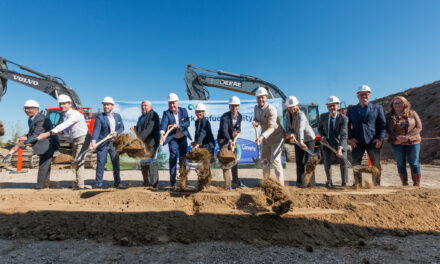- York Region ended 2024 with a $71.4 million operating surplus, attributed to underspending and increased revenues.
- Staff recommended $10 million from the surplus be allocated to the Social Housing Development Reserve, which is meant to increase delivery of community housing.
- Stouffville Mayor Iain Lovatt successfully pushed for an additional $35.1 million, bringing the housing commitment to $45.1 million.
- This added funding could support the creation of approximately 75 new housing units, according to Regional Staff.
- Regional Councillors emphasized the urgency of addressing affordable housing challenges and called for matched funding from higher levels of government.
- The remaining surplus of $26.3 million will go to the Tax Levy Development Reserve to offset costs tied to Provincial legislation like Bill 23.
York Region’s 2024 financial year closed with an operating surplus of approximately $71.4 million—an outcome officials say creates a rare and timely opportunity to help tackle the region’s deepening housing crisis.
According to a recently released financial report, 94.8 percent of the Region’s 2024 operating budget was spent by year-end. Although not yet audited, the resulting surplus was driven by general underspending across departments, stronger-than-expected revenues from York Region Transit operations, and increased funding from upper levels of government.
Regional Staff initially recommended allocating $10 million of the surplus to the Social Housing Development Reserve (the Reserve), which funds capital projects and initiatives focused on expanding community housing.
“This is a good news story,” said Stouffville Mayor Iain Lovatt during Regional Council’s April 10 Committee of the Whole meeting. “I know that there are over 15,000 families that are waiting on our Housing York waitlist for subsidized and affordable housing in York Region.”
Taking Staff’s recommendation further, Lovatt introduced and received approval for an amendment increasing the Reserve’s allocation by an additional $35.1 million.
That $35.1 million had originally been earmarked for the Workers’ Compensation Reserve ($13.9 million) and the Group Benefits Reserve ($21.2 million). Instead, those financial pressures will now be addressed during the 2026 budget process.
“We’ll need to take some time to assess, but the additional $35 million would equate to about 75 additional housing units,” said Lisa Gonsalves, the Region’s Commissioner of Community and Health Services.
She noted that the recommended $10 million was intended to support the Community Housing Supply Grant program, which provides capital funding for non-profit and co-operative housing projects across the region.
“I think this is a once-in-a-lifetime opportunity to inject some funding into an issue that we have all put our name to,” said Lovatt, referencing Council’s repeated recognition of the housing, affordability, and homelessness crises affecting York Region residents.
Newmarket Mayor John Taylor supported the amendment, acknowledging the competing priorities for surplus funds.
“It’s not to say that there aren’t other…areas of need when a surplus is generated…[But] trying to move the needle on housing, housing affordability, our waitlist, and homelessness is a bit of the art of the possible, and there is something that’s possible here,” he said.
“This is not a huge step forward, but it’s an…important one. It allows us to move from talk to action…and to put a statement out that we are serious about doing our part,” Taylor added. “We know we can’t do it all, but hopefully other levels of government are [bringing] more to the table in the next six months…and this demonstrates that we are ready to do more.”
Regional Councillor Gino Rosati introduced a friendly amendment to include advocacy to upper levels of government for matched funding.
“I realize the significance and how far behind we are,” he said. “We should ask that they contribute a similar amount: one third (Regional), one third (Provincial), one third (Federal)… I think it is very important that we start really putting pressure and requesting this funding.”
“Absolutely, we have to do that,” Lovatt responded in agreement.
“In recent history, we have taken the lead…in approving funding for the advancement of housing, and the Provincial government and Federal government have come in behind to support those projects,” he added. “While we didn’t have that commitment going out of the gate, we had it come in once a shovel went in the ground.”
“I think this creates a huge opportunity for us to advance some much-needed housing,” Lovatt concluded.
The remaining surplus of $26.3 million will be allocated to the Tax Levy Development Reserve. That distribution is meant to cover Development Charge discounts and other financial exemptions required under recent Provincial legislation, including Bill 23, the More Homes Built Faster Act.
“When we were in the [2024] budget process, we recommended…not increasing the tax levy to fund any potential shortfalls from Bill 23 and the other measures the Province has put in place,” said Laura Mirabella, Commissioner of Finance and Regional Treasurer. “We did, however, ask departments to try and generate a surplus.”
“We tend to try and generate a surplus of…1 to 2 percent, which would be about $30 million,” Mirabella said. “We indicated to Council that the first call on that would be to fund the Development Charge shortfalls.”





